By Hugo Toledo, Senior Business Intelligence Architect, BI Answer Man
I meant to say that. You know, as in “The topic of frameworks is paramount”? Keep reading. This will make more sense later.
First, though, a word about checklists: under-appreciated.
Think about it. Life may be quite unpleasant without the assiduous use of checklists. For example, would you want the folks at the front of the plane to skip their pre-flight checklist? How about in the OR? You don’t want your surgical team losing track of a sponge, right?
I think you should have checklists for everything. I like the idea of not having to remember something if I can write it down and refer to it later. Of course, the very act of writing something down helps cement it. I’d quote Einstein on this but, frankly, I think it’s apocryphal.
And, yes, I even have checklists for newsletter articles I write. I may be breaking the fourth wall or its newsletter equivalent here, but, look, without this list, I’d be sure to miss something:
- Select a topic relevant to your readers
- Research the space
- Determine what your readers should take away from the article. Options include:
- Awareness of the topic
- Perhaps a new perspective on an “old” topic
- Tips for knowing when to apply this knowledge
- Guidelines on how to apply this knowledge
- Write the first draft by the Friday before publication
- Discuss it with the marketing team on Monday of publication week
- Come up with a catchy title
- If you can’t, introduce a typo or an apparent grammatical mistake; that will always get their attention
- Just don’t forget to explain to your readers that it was intentional. You know, it’s a clever way of signaling “you and I both know that’s grammatically incorrect but isn’t it funny anyway?!?!”
- Make doubly sure your readers know it is NOT a mistake
- OK, so seeing as you’ve read this far, you should now know the title was NOT a mistake
- Submit the final version for publication on Tuesday
- Rest on Wednesday
- Look for it in print on Thursday
But, hey, I’m here to talk about frameworks, not checklists, per se.
I’ve been working regularly with IT frameworks for over 15 years. The first one with which I worked extensively was John Zachman’s Framework for Enterprise Architecture. It’s been updated over the years to accommodate what we’ve learned about its utility, but essentially it has remained the same. Over the last decade, we’ve used Business Intelligence-related frameworks to ensure we apply a consistent process to identifying and solving our clients’ problems.
So, what is a framework? According to Google’s top result for “define framework”, it is: “a hypothetical description of a complex entity or process”. That works for me. However, let’s make this a bit more concrete. We use frameworks to help our clients see how we walk through a problem space AND to help ensure we know what we don’t know. You see, you don’t have to fill in a framework to derive great value. A framework provides value by clearly showing what you have not chosen to resolve. As such, you know where the quality or detail of work is less reliable and can, therefore, devote more time and attention to it.
Here’s a table from a simple BI Framework, such as one you may use to prepare for a migration project:
In this case, our client was migrating hundreds of reports from a legacy environment to their new BI deployment. In the course of migration, we recommended they not merely rewrite or convert each document as is but, rather, use this effort to also set up their framework for user types and report types. In one chart you can see how we have focused on the top three user types (Who), the type of information for which each approach is best suited (Why), and their preferred means of receiving this type of information (How).
This approach helps you close gaps in a manner and at a rate that makes sense for your business. The gray boxes indicate those parts of the migration not yet in scope. Were you to you change everything at once, you would likely have too many modifications soon coming down the line as your organization rejects some of the approaches presented.
In our next post, we’ll go into one of our preferred frameworks, TDWI’s MAD (Measure, Analyze, Drill) Framework, and show you how we use it to ensure our clients can progress along a gently sloping curve to BI maturity, making their investments rationally but with the understanding that they are providing greater clarity and a stronger base on which to make business decisions.
Now, what about you? Do you regularly employ checklists? If you do, I’d be willing to bet you have several different ones in play at one time, am I right? And, if you don’t, why not? Let me know, I’d like to highlight this dichotomy in a future article. View the BI Answer Man’s Page here.









